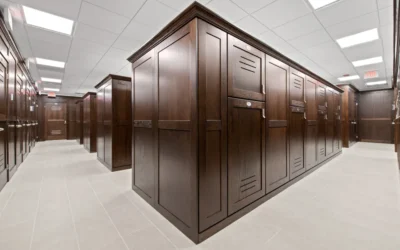The self-storage industry can expect a soft landing from the current surge of development activity, according to Dean Jernigan, CEO of the publicly-traded investment REIT Jernigan Capital.
Following the company’s third quarter earnings call, Jernigan took to Twitter to share additional views on the current state of self-storage development and supply, stating that “no oversupply tsunami” was coming for the industry and that overbuilt markets will quickly absorb new supply due to strong rates of population growth.
Our bottom line opinion is that there is no oversupply tsunami coming. Some markets will experience overbuilding.
— Dean Jernigan (@deanjernigan) November 2, 2017
These overbuilt markets are also high growth MSAs where new population will help new supply absorption.
— Dean Jernigan (@deanjernigan) November 2, 2017
Jernigan went on to name five specific reasons as to why the industry will not be hamstrung by ramped up self-storage construction: better data, experienced developers, constrained lending, more sophisticated construction, and the increasing cost of building modern facilities.
JCAP expects a soft landing for the development cycle primarily due to five reasons.
— Dean Jernigan (@deanjernigan) November 2, 2017
1. Good data
2. Experienced professional developers
3. Debt capital is constrained
4. Type of construction is more sophisticated.— Dean Jernigan (@deanjernigan) November 2, 2017
The 5th reason is a result of the 4th. Our facilities cost more than in previous cycles creating a need for more capital and sophistication.
— Dean Jernigan (@deanjernigan) November 2, 2017
Don’t believe the hype
In a separate commentary published by the company early this morning, company president and COO John Good provided further analysis of the new supply environment stating: “The data indicates that rumors of the demise of the self-storage sector due to excessive new supply are wildly exaggerated on a national level.”
Good stated that some industry estimates of the number of new facilities are overstated by as much as 80 percent.
A company analysis of data from Yardi Matrix and the US Census Bureau found that about 438 new facilities were delivered during 2015 and 2016, and that 2017 is expected to yield 337 facilities (about 27 million square feet of storage space). The analysis projects between 350 and 362 facilities will be delivered in 2018. The findings are in contrast to other industry estimates alluded to by Jernigan Capital, which in its report states that “some industry professionals have gone on record predicting as many as 900 deliveries nationwide in 2017 alone.”
“The combination of pent up demand, continued strong population growth in excess of 1 percent per year and increased mobility of families and millennials can be expected to produce orderly absorption of new supply in general,” Good stated.
In addition, Good said that strict banking regulations and more limits on storage development in major markets will prevent a “significant percentage of planned projects” from every being built.
Some markets still under threat
The report acknowledged that some markets are in overbuilt territory and published a list of markets it believes should be avoided by developers, or pursued only with “extreme caution.”
The company’s Danger List covers markets they believe present a higher risk of “longer-term absorption issues and softened rates”. The company’s Watch List consists of markets with a higher risk of short-term absorption and rate pressures, but have the ability to absorb supply over a “relatively normal stabilization period.”
|
Danger List |
Watch List |
||||
| Raleigh | San Jose | ||||
| Nashville | Seattle | ||||
| Portland | Louisville | ||||
| Denver | Milwaukee | ||||
| Charleston | Detroit | ||||
| Charlotte | New York | ||||
| Miami | St. Louis | ||||
| Austin | Boston | ||||
| Washington D.C. | |||||
| Pittsburgh | |||||
| Phoenix | |||||
| Bridgeport-Hartford | |||||
| Greenville SC | |||||
| Dallas | |||||
| Jacksonville | |||||
| San Antonio | |||||
| Houston |
Nearing the end of the cycle
But there still may be opportunities in the listed markets if you know where to look, Good noted.
“We have invested in, and continue to find, compelling projects in certain submarkets in some of the MSAs on our Danger and Watch Lists,” Good said.
The report concluded that the current development cycle will peak with a “two-year crest” over the course of 2017 and 2018, and that the market will absorb the new supply with “relatively short-term” rate pressure.
“In short, if the sector continues the current trajectory of new starts, we are expecting this development cycle to end with a soft landing in 2019 and 2020,” Good said.







